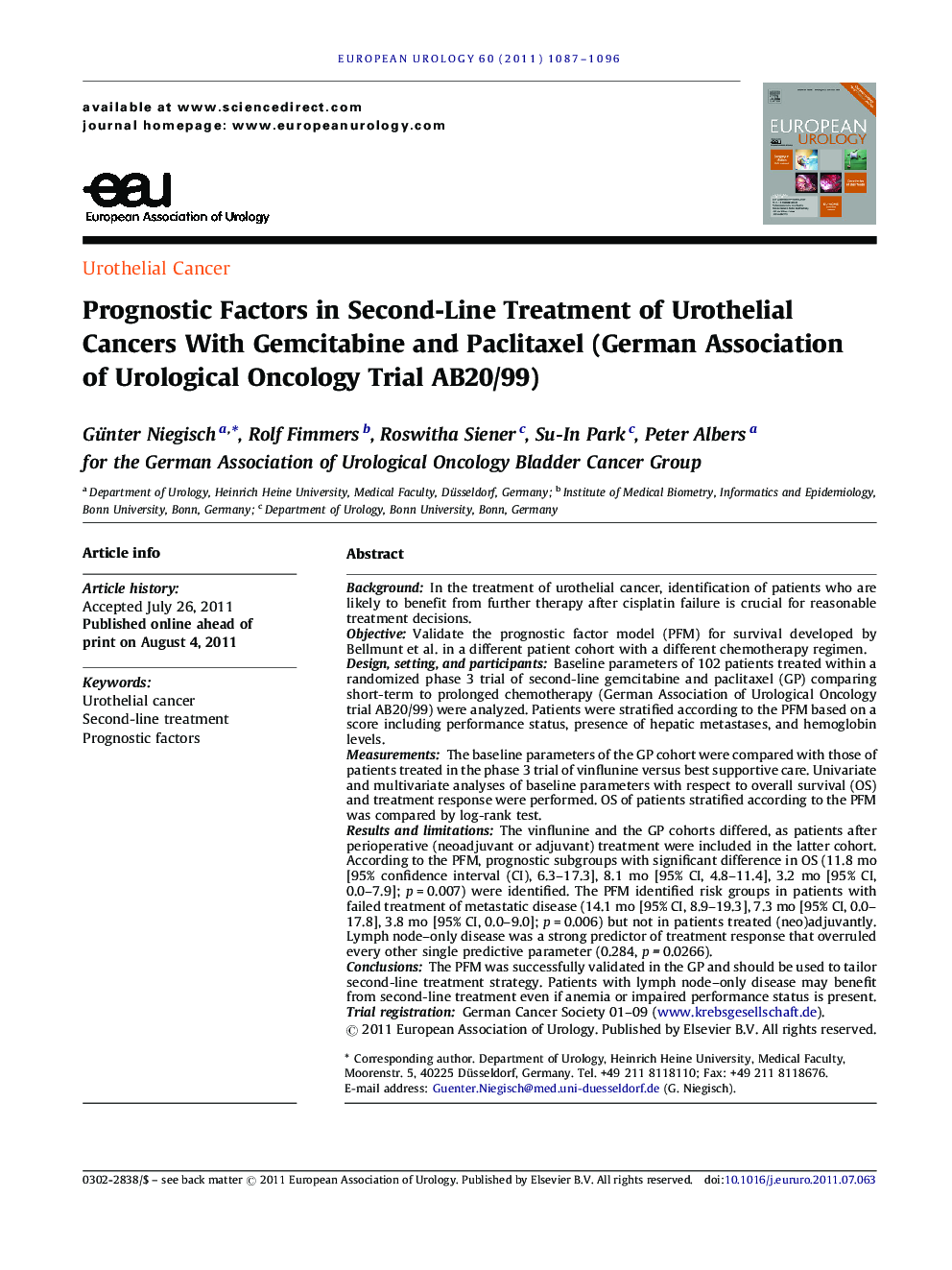| کد مقاله | کد نشریه | سال انتشار | مقاله انگلیسی | نسخه تمام متن |
|---|---|---|---|---|
| 3927114 | 1253164 | 2011 | 10 صفحه PDF | دانلود رایگان |

BackgroundIn the treatment of urothelial cancer, identification of patients who are likely to benefit from further therapy after cisplatin failure is crucial for reasonable treatment decisions.ObjectiveValidate the prognostic factor model (PFM) for survival developed by Bellmunt et al. in a different patient cohort with a different chemotherapy regimen.Design, setting, and participantsBaseline parameters of 102 patients treated within a randomized phase 3 trial of second-line gemcitabine and paclitaxel (GP) comparing short-term to prolonged chemotherapy (German Association of Urological Oncology trial AB20/99) were analyzed. Patients were stratified according to the PFM based on a score including performance status, presence of hepatic metastases, and hemoglobin levels.MeasurementsThe baseline parameters of the GP cohort were compared with those of patients treated in the phase 3 trial of vinflunine versus best supportive care. Univariate and multivariate analyses of baseline parameters with respect to overall survival (OS) and treatment response were performed. OS of patients stratified according to the PFM was compared by log-rank test.Results and limitationsThe vinflunine and the GP cohorts differed, as patients after perioperative (neoadjuvant or adjuvant) treatment were included in the latter cohort. According to the PFM, prognostic subgroups with significant difference in OS (11.8 mo [95% confidence interval (CI), 6.3–17.3], 8.1 mo [95% CI, 4.8–11.4], 3.2 mo [95% CI, 0.0–7.9]; p = 0.007) were identified. The PFM identified risk groups in patients with failed treatment of metastatic disease (14.1 mo [95% CI, 8.9–19.3], 7.3 mo [95% CI, 0.0–17.8], 3.8 mo [95% CI, 0.0–9.0]; p = 0.006) but not in patients treated (neo)adjuvantly. Lymph node–only disease was a strong predictor of treatment response that overruled every other single predictive parameter (0.284, p = 0.0266).ConclusionsThe PFM was successfully validated in the GP and should be used to tailor second-line treatment strategy. Patients with lymph node–only disease may benefit from second-line treatment even if anemia or impaired performance status is present.Trial registrationGerman Cancer Society 01–09 (www.krebsgesellschaft.de).
Journal: European Urology - Volume 60, Issue 5, November 2011, Pages 1087–1096